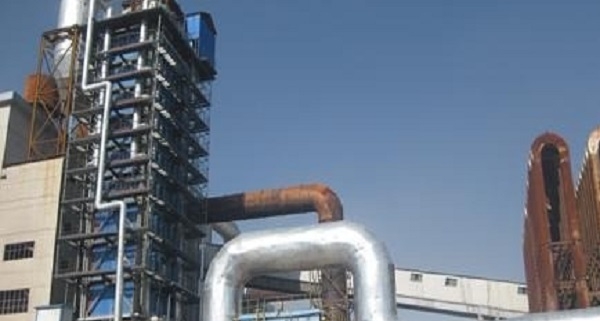The use of industrial waste heat utilization is an important way to improve the economy and save fuel. There are various waste heats in the production process of thermal power plants. For example, boiler waste heat, deaerator exhaust and steam seal steam exhaust heat. This type of waste heat belongs to the heat transfer of the working medium. Usually, while recovering heat, it will also recover some of the remaining heat of the working fluid. They only use heat, and there is no recovery of the working fluid, for example, the heat lost by the generator. The heat removed by the oil cooler and the waste heat of the boiler exhaust, etc., such waste heat is pure heat recovery.
The availability and value of waste heat is determined by both its production and quality. The amount of waste heat refers to the amount of residual heat. The quality of waste heat refers to the grade of waste heat, which can be characterized by its temperature, pressure and medium carrying heat. The higher the residual heat grade, the greater the quantity and the greater the availability and value.
The availability and value of waste heat is not equal to the effect of waste heat utilization. The former refers to the quality and nature of the waste heat itself. It only indicates the availability of waste heat, but does not indicate the effectiveness of waste heat utilization. The latter is not determined by the quality of the waste heat itself, but also depends on the location, environment, and method of utilization of waste heat, that is, the objects and conditions for the use of waste heat.
Industrial waste heat mainly includes: waste heat of flue gas, waste heat of cooling medium, chemical reaction heat of waste steam waste heat, high temperature product and residual heat of slag, and waste heat of combustible waste gas and waste. From the perspective of economy, it is necessary to combine the process production to design the overall system layout and comprehensively utilize energy to improve the efficiency of the waste heat utilization system equipment.
Industrial waste heat utilization technology
According to the characteristics of energy transfer or conversion of waste heat resources in the process of utilization, the current domestic industrial waste heat utilization technology can be divided into heat exchange technology, heat work conversion technology, and waste heat refrigeration heating technology.
Heat exchange technology heat
The exchange technology is the most direct and efficient economic method for recovering waste heat from the industry. This technology does not change the form of waste heat energy. It only transfers the waste heat energy directly to the energy consumption process of its own process through heat exchange equipment, reducing primary energy consumption. The main utilization methods include partition wall heat exchange, waste heat boiler, regenerative heat exchange, and heat transfer of heat pipes.
Thermal power conversion technology
The use of thermal power conversion technology can improve the grade of waste heat. It is another important technology for recycling industrial waste heat. According to the classification of working fluids, the heat work conversion technology can be divided into traditional steam turbine power generation technology with water as working fluid and low boiling point work. Quality organic working power generation technology.
At present, the main industrial applications are water-based working fluids, low-temperature steam turbine power generation systems consisting of waste heat boilers + steam turbines or expanders.
Refrigeration and heating technology
Compared with traditional compression refrigeration units, absorption or adsorption refrigeration systems can use low-cost energy and low-grade thermal energy to avoid power consumption. They have significant power-saving and environmental benefits, and have been widely used.
The absorption type waste heat refrigeration unit has high refrigeration efficiency and is suitable for waste heat recovery of large-scale heat. The adsorption refrigeration system has a simple structure, no noise, no pollution, and can be used for bumping and oscillating occasions, and is more suitable for utilizing small heat waste heat recovery or for cogeneration systems.
The heat pump consumes a part of high-quality energy (electric energy, mechanical energy or high-temperature heat energy) as compensation. The heat of the low-temperature residual heat source is “pumped” to the high-temperature heat medium through the thermal cycle of the refrigerator. The heat pump technology is often used to recover slightly higher than the environment. The waste heat of temperature (30~60 °C) achieves the purpose of energy saving and consumption reduction.
In summary, the industrial waste heat is large and wide, but there are certain applicable conditions. According to different types of waste heat, temperature and residual heat, combined with production conditions, process flow, internal and external energy demand, enterprises should choose suitable waste heat utilization. Ways to achieve the goal of reducing energy consumption and improving efficiency.



